On the morning of Thiruvonam, we accompany our friend to pick some flowers and the best banana leaves available in the area.
A day before, her mother makes a trip to Rama Stores in Munirka (Delhi) and returns with bags full of Onam supplies. Some shallots for sambar, yams, yellow pumpkins, white gourd and drumsticks for avial (vegetables cooked in coconut milk, yogurt and spices), nenthra kaaya (raw banana from Kerala) for erissery (a semi-dry preparation made by shallow frying boiled raw banana with grated coconut), nenthra pazham (ripe banana from Kerala), which is the most important fruit for Onam and is in season, sharkara upperi (sweet banana chips, coated in jaggery and dry ginger powder), upperi (a variety of savoury banana chips); and coconuts, lots and lots of them.
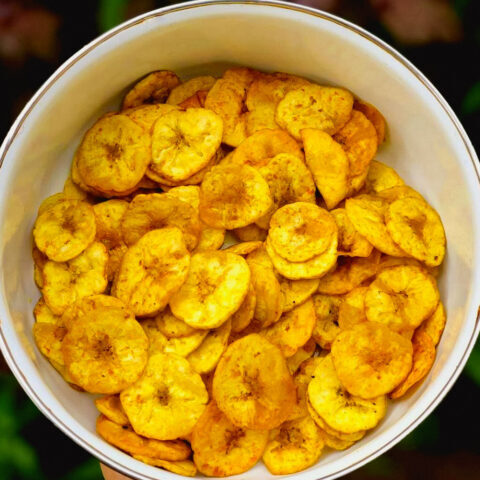
They belong to the Menon family, which hails from the Tharoor village in the Palakkad district of Kerala. Back in the day, they would celebrate the festival by practically feeding a village. Bunches of nenthra pazham, drums filled with coconuts and other vegetables, sacks full of flowers would arrive into their palatial home and everyone would get to work. Cutting and chopping fruits and vegetables, grating and grinding coconuts – everything was a laborious but festive group activity performed by the family, their cousins, the cousins of cousins, friends and whoever wished to participate. The house was cleaned and spiffed up, and then the cooking and decorations ensued.
Pookalams (flower Rangoli/flower designs) would be made on the courtyard floor; the corridors and pillars would be adorned with auspicious leaves and flowers. Women would drape stunning off-white veshti-mundu sets (Kerala two-piece sari) and wear the most exquisite gold jewellery. Men would dress up in silk or cotton shirts and white mundus (lungi/ wrap around skirt for men). Before partaking in the sadya, the nilavilakku (traditional brass lamp of Kerala) would be lit up and the onapattu (colloquial Onam song) would be sung by all as the food was finally served.
Today, a tiny part of this grand family from Tharoor resides in Delhi. Those of us who have grown up with them have intently listened to this recollection of their childhood Onam memories, every year. Here, the pookalam is smaller and is made in the apartment hallway. We eat sparingly through the day, just to warm up for the food marathon, and as the evening approaches, we dress up in our best, but also most comfortable Indian clothes and rush to their house.
As people arrive, the sound of pappadums (papad/ crisps) and upperi being munched on, mixed with constant chatter fills the house.
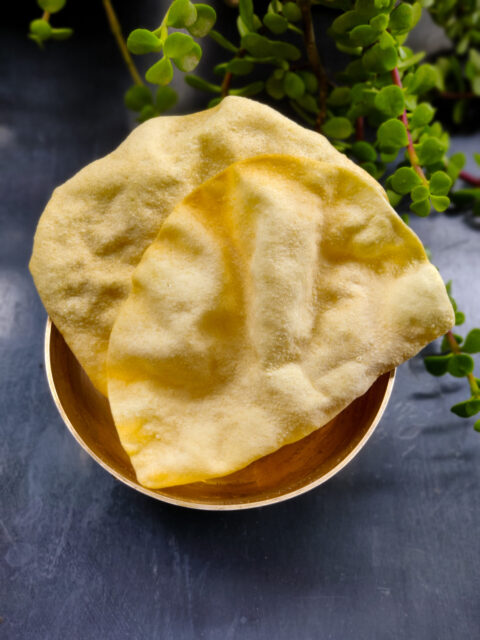
The nilavilakku is lit up and our beloved aunty sings the onapattu. We sing along, pretending to know the lyrics, then lower it to a hum after the first two sentences and imagine ourselves to be characters of the Palakkad story. Once the food is served, an unprescribed silence pervades the space. Everyone attempts to eat the spread in the correct order, without taking help from the experts.
Aunty patiently explains the placement of dishes to us and we nod enthusiastically, repeating after her, every year. The narrow end of the leaf is kept to your left, where pickles, chutneys and snacks are placed; the broader part towards the right is for mains.
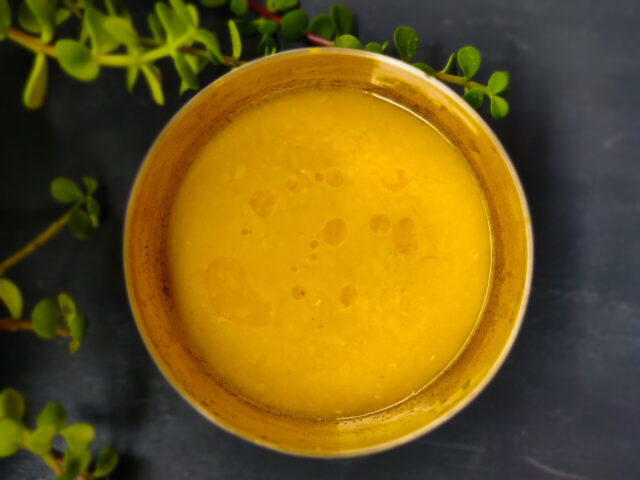
We usually begin with the humble paruppu sadam (pulses and rice), enriched with a generous serving of ghee and a greedy side of puli inji (tamarind ginger chutney) of course. The puli inji in this house has a lustrous deep brown colour. They’re particular about using aged tamarind that has darkened, instead of using the raw red one.
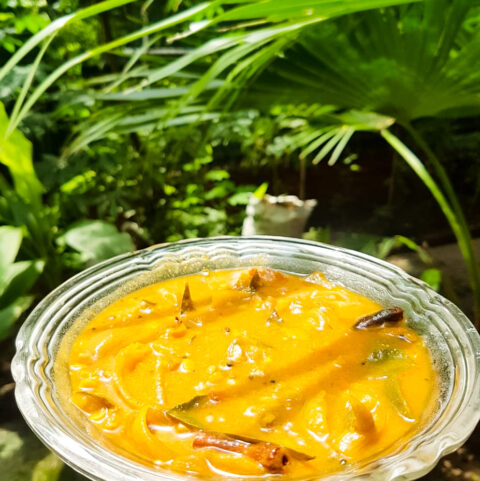
The paruppu sadam is followed by avial, sambar (vegetables cooked in tamarind and lentil curry), with accompaniments like thoran (dry preparation of beans, cabbage or raw jackfruit and grated coconut) and erissery, all of which are interspersed with helpings of olan (ash gourd simmered in coconut milk) which acts as a palate cleanser between dishes with different profiles.
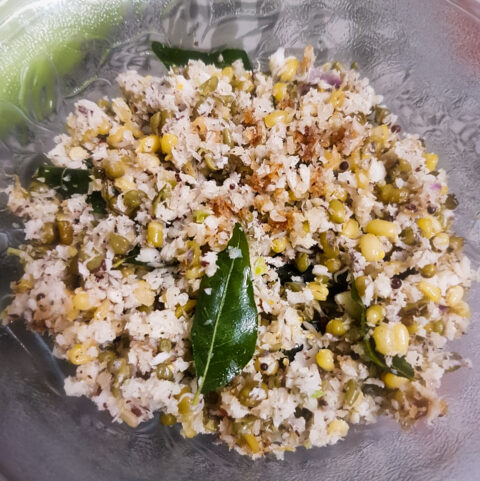
The moru sadam (buttermilk/curd rice) is usually eaten at the end after desserts like paal payasam (rice or vermicelli and milk pudding) and ada pradhaman (rice flour flat pasta and milk pudding) to prevent any bloating, but most of us like to save the sweet for last.
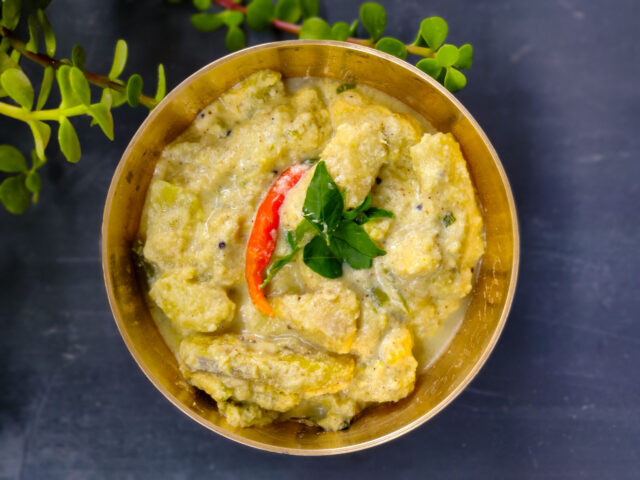
A few minutes into the meal, the impatient curiosity to taste everything, defeats the desire to look like the most professional Sadya eater, and what was supposed to be an assortment eventually becomes one salmagundi of dishes.
At the end of the meal, people slowly get up from the floor and land on the couch, their hearts and stomachs full, feeling drowsy and dazed from overindulgence. We procrastinate our departure and sit there chatting, feeling contented but also sullen that it’s time to wrap up. All of us quickly help clear out the space and unwillingly drag ourselves back home.
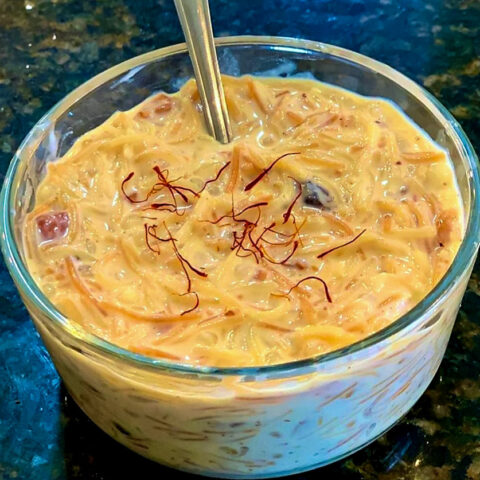
For many Delhi dwellers, who have similar experiences and stories to share, this is how they remember being introduced to the onasadya. A few families carried their traditional recipes and stories with them and welcomed us into their lives one meal and one story at a time. This version might be a scaled down one with 20 instead of 200 people and fewer items than the original elaborate fare, but it has instilled in us a sense of community and sharing.
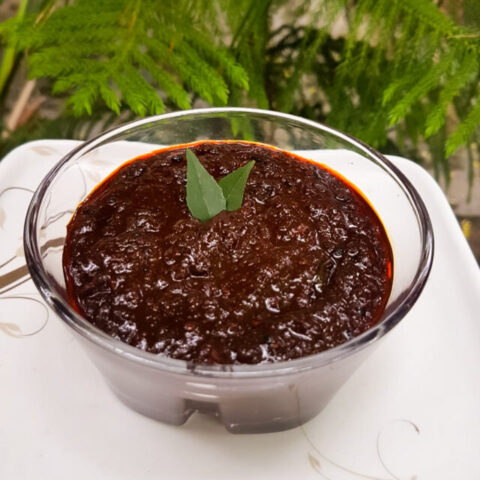
Another such story is of the Nair family from Mararikulam village in the Alappuzha district of Kerala, who now live in Chanakyapuri (Delhi). They are loyalists of Anil Super Stores, located in Mohammadpur, R. K. Puram, from where they source Onam essentials and the monthly issue of their favourite Vanitha magazine. In their version of sadya, two varieties of inji, one with jaggery and one without are served. Their backyard harvest includes banana stems, drumsticks (moringa), curry leaves and mangoes. They’ve followed the annual ritual of inviting friends and neighbours over since years and there’s always food for anyone who drops in to wish them.
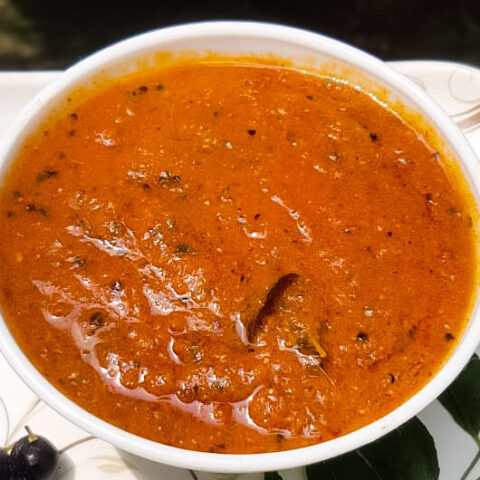
Over the last decade or so, lesser-known Southern Indian food has gained mainstream interest amongst the epicureans of Delhi. Nearly every postcode has specialty shops like Rama stores and Anil Super Stores, that sell south Indian staples, and one food tradition that has inflated into a trend is incontestably the Onam sadya.
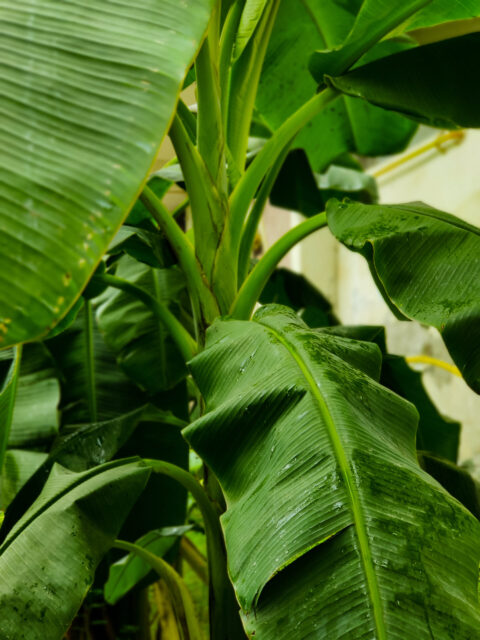
Each year, specialty restaurants (and recently, some home chefs) advertise elaborate menus and food culture enthusiasts rush to book the finest sadya experiences. But we must remember and acknowledge that the Onasadya came to Delhi with the families who insisted on continuing and reviving their traditions. True to the spirit of the festival, they invited neighbours, transcending religio-cultural contexts, and shared their knowledge through food and fables. They planted banana stems and curry trees in their backyards, to preserve the practice of fresh, sustainable and indigenous ways of eating.
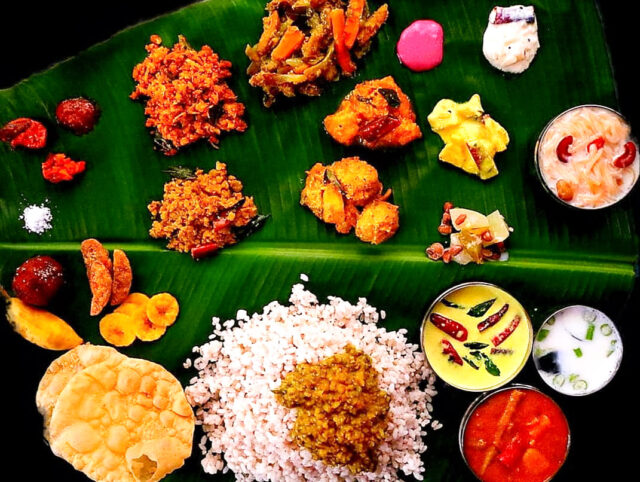
And so, for some of us, Onam is incomplete until we wake up early morning to look for the best banana leaves and colourful flowers with our friend, until we listen to ancestral anecdotes from our dearest aunties and ammammas (grandmas), and until we hear them sing the onapattu as we sit down to eat.
The song goes like this,
maveli nadu vaneedum kalam
manusharellarum onnupole
amodhat hode vasikkum kalam
apathangarkkumottillathanum
kallavum illa chathiyumilla
ellolamilla polivachanam
kallapparayum cherunazhiyum
kallatharangal mattonnumilla
adhikal vyadhikalonnumilla
balamaranangal kelppanilla
Meaning,
When Maveli, our King, ruled the land,
All the people were equal.
And people were joyful and merry;
They were all free from harm.
There was neither anxiety nor sickness,
Deaths of children were unheard of,
There were no lies,
There was neither theft nor deceit,
And no one was false in speech either.
Measures and weights were right;
No one cheated or wronged his neighbor.
When Maveli, our King, ruled the land,
All the people formed one casteless races.
Thanks to Shweta Malik and her mother Manju aunty (from Tharoor, Palakkad) for helping us recollect our memories.
Thanks to Govil Nair and his mother Latha aunty (from Mararikulam, Alappuzha) for photo contributions and information.
Translations and detailed descriptions are provided to give a better understanding of the story to people from different cultural backgrounds across the globe.

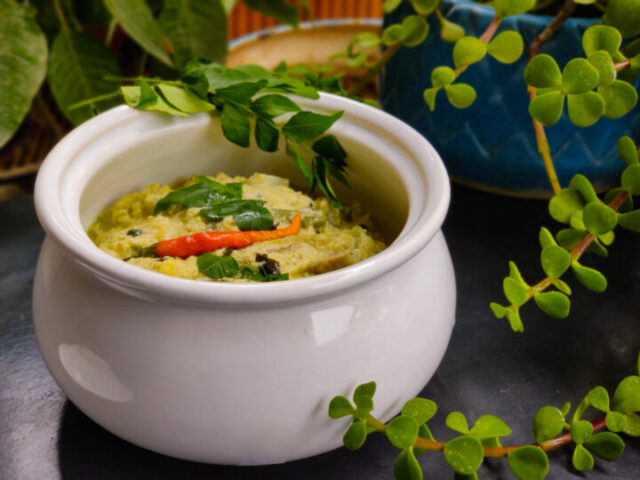
So much love in this food…
Right? It’s all heart! 🙂